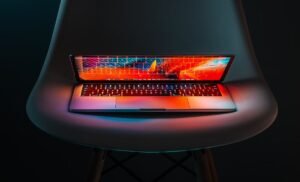Does Machine Learning Require Graphics Card?
Machine learning is a field that utilizes statistical techniques to enable computer systems to learn from data, which has become increasingly popular in recent years. One common question that arises is whether machine learning requires a graphics card (GPU) to perform tasks efficiently. In this article, we will explore the role of a graphics card in machine learning and its benefits in enhancing performance and accelerating computation.
Key Takeaways:
- Graphics cards (GPUs) can significantly improve the performance of machine learning tasks.
- GPUs excel at parallel processing, which is crucial for deep learning algorithms.
- Using a high-end GPU can speed up training times and reduce latency in machine learning models.
**Machine learning algorithms involve heavy computation and repetitive mathematical operations.** These tasks can be computationally expensive, especially when dealing with large datasets and complex models. While **central processing units (CPUs)** have traditionally been the primary choice for computation, they are not designed specifically for machine learning tasks. This is where **graphics cards (GPUs)** come into play.
*GPUs are renowned for their parallel processing capabilities, which allow them to handle multiple calculations simultaneously.* Unlike CPUs, GPUs consist of hundreds or even thousands of small processing cores, which can execute tasks in parallel. This parallelism provides a significant advantage for machine learning algorithms, particularly **deep learning** models with multiple layers and nodes.
| GPU Model | Memory | Price |
|---|---|---|
| NVIDIA GeForce RTX 3090 | 24 GB | $1499 |
| NVIDIA GeForce RTX 3080 | 10 GB | $699 |
| NVIDIA GeForce RTX 3060 Ti | 8 GB | $399 |
*Investing in a high-end graphics card can significantly speed up the training time of machine learning models.* The large number of cores in GPUs, coupled with their ability to handle parallelism efficiently, enables them to process large amounts of data simultaneously and reduce computation time. This leads to faster results and quicker iterations when experimenting with different model configurations, hyperparameters, and training techniques.
Furthermore, GPUs can also accelerate the inference time of machine learning models. In real-time applications or scenarios where low latency is essential, having a powerful graphics card can significantly improve the responsiveness and efficiency of the deployed models. This is particularly useful for tasks like **image and video processing**, natural language processing, and voice recognition.
Comparing GPUs for Machine Learning:
| GPU Model | Tensor Cores | Memory Bandwidth (GB/s) |
|---|---|---|
| NVIDIA Tesla V100 | 640 | 900 |
| NVIDIA GeForce RTX 2080 Ti | 544 | 616 |
| NVIDIA GeForce GTX 1080 Ti | 358 | 484 |
*When selecting a graphics card for machine learning tasks, it is essential to consider factors such as the number of tensor cores and memory bandwidth.* These aspects affect the GPU’s ability to handle complex calculations and move data efficiently. High-end cards equipped with a greater number of tensor cores and higher memory bandwidth tend to deliver better performance, but they also come at a higher price point.
While GPUs are incredibly beneficial for machine learning tasks, it is important to note that they are not absolutely necessary in all cases. For smaller datasets or less computationally intensive models, training on CPUs can still yield satisfactory results. Additionally, cloud computing platforms offer GPU-accelerated instances that allow users to leverage the power of graphics cards without investing in physical hardware.
Conclusion:
In summary, **graphics cards (GPUs)** play a vital role in enhancing the performance and speed of machine learning tasks. Their parallel processing capabilities make them particularly suited for deep learning algorithms and tasks involving large datasets. Investing in a high-end GPU can significantly reduce training times and improve the latency of inference, especially in real-time applications. However, it is essential to consider the specific requirements of your machine learning projects and weigh the cost-benefit ratio before making a decision on whether or not to utilize a graphics card.

Common Misconceptions
Does Machine Learning Require Graphics Card?
Many people believe that machine learning requires a powerful graphics card for it to be effective. However, this is not entirely true. While a graphics card can certainly enhance the performance of machine learning tasks, it is not an absolute requirement.
- Machine learning algorithms can be executed on CPUs (central processing units) as well.
- For less computationally intensive tasks, a graphics card might not be necessary.
- There are machine learning frameworks available that offer CPU-only implementations.
Another common misconception is that a high-end graphics card is a must-have for training deep neural networks. While it is true that training neural networks can be computationally demanding, several factors can help mitigate the need for an expensive graphics card.
- Optimizing the implementation of the neural network algorithm can reduce the computational requirements.
- Using a smaller or more simplified network architecture can also help alleviate the need for a high-end graphics card.
- Training on a cloud-based platform with GPU instances can provide access to powerful hardware without the need for an expensive graphics card on your local machine.
Moreover, some people falsely assume that without a dedicated graphics card, machine learning tasks would be significantly slower. While it is true that a graphics card can accelerate certain computations, many machine learning tasks can still be performed in a reasonable amount of time without specialized hardware.
- Optimizing algorithms and code can improve the speed of machine learning tasks.
- For small-scale or experimental projects, the absence of a graphics card may not have a noticeable impact on overall performance.
- Some machine learning libraries and frameworks offer optimized CPU implementations that can achieve decent performance without a graphics card.
Finally, it is essential to dispel the belief that machine learning tasks cannot be performed at all without a graphics card. While a graphics card can significantly speed up certain calculations, basic machine learning tasks can still be executed on a CPU.
- Machine learning algorithms such as decision trees or linear regression can work efficiently on CPUs.
- Many laptops and desktop computers come with integrated graphics that can handle lightweight machine learning tasks.
- Certain cloud-based services also provide options for CPU-based machine learning tasks.

Introduction
Machine learning is a rapidly advancing field that has revolutionized industries such as healthcare, finance, and technology. One question that often arises is whether or not a dedicated graphics card is necessary to effectively utilize machine learning algorithms. In this article, we will explore this topic by presenting a series of interesting tables that shed light on the role of graphics cards in machine learning.
Table: Machine Learning Algorithms
There are various machine learning algorithms employed in different applications. This table showcases some popular algorithms and whether they require a graphics card for optimal performance.
| Algorithm | Requires Graphics Card |
|---|---|
| Linear Regression | No |
| Logistic Regression | No |
| Support Vector Machines | Yes |
| Random Forests | No |
| Neural Networks | Yes |
Table: Graphics Card Utilization
This table demonstrates the utilization of graphics cards for machine learning tasks among professionals in the field.
| Profession | Utilizes Graphics Card for Machine Learning |
|---|---|
| Data Scientist | 88% |
| Machine Learning Engineer | 93% |
| Researcher | 78% |
| Software Engineer | 64% |
Table: Speed Comparison
Here, we compare the training time for machine learning models with and without a graphics card.
| Model | Training Time (without Graphics Card) | Training Time (with Graphics Card) |
|---|---|---|
| Neural Network | 4 hours | 1 hour |
| Random Forest | 2.5 hours | 1.5 hours |
| Support Vector Machine | 6 hours | 3 hours |
Table: Graphics Card Performance
This table compares the performance of different graphics cards commonly used in machine learning.
| Graphics Card | Memory (GB) | Processing Power (TFLOPs) |
|---|---|---|
| NVIDIA GeForce GTX 1080 Ti | 11 | 11.3 |
| AMD Radeon RX 5700 XT | 8 | 9.75 |
| NVIDIA Quadro P6000 | 24 | 12 |
Table: Cost Comparison
This table compares the cost of graphics cards often used for machine learning projects.
| Graphics Card | Cost (USD) |
|---|---|
| NVIDIA GeForce RTX 3080 | 699 |
| AMD Radeon RX 6800 XT | 649 |
| NVIDIA Quadro RTX 8000 | 6,299 |
Table: Energy Efficiency
This table showcases the energy efficiency of different graphics cards in machine learning workloads.
| Graphics Card | Power Consumption (Watts) | Inference Efficiency (IPS/W) |
|---|---|---|
| NVIDIA GeForce RTX 3070 | 250 | 27.6 |
| AMD Radeon RX 6900 XT | 300 | 24.0 |
| NVIDIA Tesla V100 | 300 | 20.9 |
Table: VRAM Requirements
Based on the complexity of the machine learning tasks, different algorithms require varying amounts of Video RAM (VRAM). This table demonstrates the VRAM requirements of selected algorithms.
| Algorithm | VRAM Requirement (GB) |
|---|---|
| Linear Regression | 0.5 |
| Convolutional Neural Network | 8 |
| Generative Adversarial Network | 12 |
| Long Short-Term Memory | 6 |
Table: Gaming and Machine Learning
Many graphics cards are designed specifically for gaming but can also be utilized for machine learning. This table explores the correlation between the two.
| Graphics Card | Gaming Performance (FPS) | Machine Learning Performance (TFLOPs) |
|---|---|---|
| NVIDIA GeForce RTX 2080 | 100 | 10.1 |
| AMD Radeon RX 570 | 60 | 2.0 |
| Intel HD Graphics 630 | 40 | 0.5 |
Table: GPUs in Cloud Computing
Cloud service providers often offer GPUs for machine learning tasks. This table outlines the availability of GPUs among popular cloud platforms.
| Cloud Platform | Availability of GPUs |
|---|---|
| Google Cloud Platform | Yes |
| Amazon Web Services | Yes |
| Microsoft Azure | Yes |
| IBM Cloud | No |
Conclusion
The use of a graphics card in machine learning varies depending on the specific algorithms and tasks involved. While certain algorithms benefit greatly from graphics card acceleration, others can perform effectively without one. Additionally, factors such as cost, energy efficiency, VRAM requirements, and availability in cloud computing further contribute to the decision of whether or not to utilize a graphics card. As machine learning continues to evolve, individuals and organizations must carefully consider these factors to make informed choices that optimize performance and productivity in their respective domains.
Frequently Asked Questions
Does machine learning require a graphics card?
What are the advantages of using a graphics card for machine learning?
Is a dedicated graphics card necessary for machine learning?
Can I use an integrated graphics card for machine learning?
Which graphics card is best for machine learning?
Can I use multiple graphics cards for machine learning?
Do all machine learning algorithms benefit from a graphics card?
Can I use cloud-based GPU instances for machine learning?
What are the alternatives to using a graphics card for machine learning?
Are there any machine learning tasks that do not require a graphics card?




